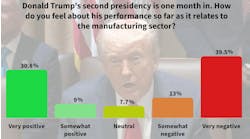The future of the auto industry is going to look like the history of the cell phone. The two even share technology: the lithium-ion battery. As the world’s automakers gradually switch from combustion to charging, some of today’s dominant car companies will share the fate of a few former titans of the smartphone. Remember BlackBerry, Nokia and Palm?
“Who will be the winners in the electric car race? Who knows?” said Mike Ramsey, senior director of research at Gartner Inc. “The incumbents could be, or they could be cut out entirely.”
This transition will play out as a plethora of electric options land in showrooms. In the next two years, an additional 85 battery-powered models will be marketed, bringing the global fleet to 357, according to the latest tally by Bloomberg New Energy Finance. Volkswagen AG is near the front of the pack, promising 20 new electric models by 2020 and another 80 by 2025. Just this month, the German automaker said the internal combustion vehicles being designed now will be its last.
“Every manufacturer feels like, ‘We’ve got to at least have a dog in this hunt or we’ll be completely left behind,’” said Karl Brauer, executive publisher for Autotrader and Kelley Blue Book. “If you ignore it and act like the market is never going to be ready, then you’re setting yourself up for real trouble.”
Being first, however, is no guarantee of success. Honda’s Insight promised a space-age 70 miles to the gallon on the highway when it rolled into dealerships as the first U.S. hybrid in December 1999. Yet the Toyota Prius, which reached the market months later, became the icon of greener wheels. A crowd of copycat hybrids arrived but none came close to matching the Toyota model’s cachet.
“An entire segment can be sucked up by one or two models,” Brauer said. Two decades later, the Prius accounts for almost half of electric vehicle sales to date.
The automaker that can capture this kind of icon status in the electric-vehicle space will be in a different gear for years. At the moment, Tesla Inc. appears to have that advantage, although there’s probably room for another paragon vehicle or two—a more affordable SUV, for instance, or an electric pickup truck.
The vehicles that don’t help to meaningfully define their category face a tough slog. “There will be a very long tail of EV models that don’t sell especially well,” said BNEF analyst Colin McKerracher.
At the moment, outside of China, the non-Tesla options in electric vehicles such as the Nissan Leaf, Chevy Bold and BMW i3 aren’t selling particularly well. Analysts expect that to change in coming years as the cost of batteries swoon and the market welcomes more electric SUVs—the body style that’s in fashion at the moment. That means for the next decade or so, old-school car executives will try to pull off a tricky financial stunt: driving returns with gasoline engines until their electric models have enough momentum to start keeping pace. They are essentially using an old technology to fund the transition to the next, and the timing is fraught. Jump to the electric drive train too soon and the whole works will grind to a halt; jump too late and lose the EV race.
Startups such as Tesla, critically, don’t have to make this awkward jump. They are tiny and inexperienced, but they don’t have to worry about feeding a legacy business as it slowly winds down.
Exacerbating the dynamic for incumbent automakers is that demand of EVs might not be linear, particularly if gas prices spike or government incentives fall. And the more money companies like Daimler AG and Volkswagen pour into electric vehicles, the greater the urgency there will be to sell them and the quicker the economics shift towards profit.
“There’s some element of self-fulfillment in this,” McKerracher said. “You’ll see a virtuous cycle of volume and cost reduction. That’s sort of what’s been missing with EVs.”
Even making a great electric vehicle and timing the market perfectly may not be enough. At Tesla, the sexy sedan is just the start. The company has thrived, in part, because it deals directly with consumers and allows everyone to build the exact car that they’d like to own. Tesla’s cars are also undergoing constant improvement with over-the-air software updates, essentially scrapping the whole concept of a model year.
“They literally do everything differently,” Ramsey said.
The old guard of the auto industry, meanwhile, can’t sell directly to customers without running afoul of franchise laws. Dealerships, in turn, have little incentive to push electric vehicles. Battery-powered machines don’t offer a fat stream of parts and maintenance revenue, which comprises $12 of every $100 the typical U.S. car shop collects. An electric vehicle never needs antifreeze, a new set of spark plugs or even an oil change.
Incumbent manufacturers “seem to be thinking of electric vehicles as just changing the powertrain,” Ramsey said. “If there’s a big switch over to EVs, these companies may need to…change the entire way that they think about the market.”
While the auto-making old guard jockeys for position, they’re likely to face an onslaught of competition unlike anything the industry has seen in generations. The simplicity of an electric motor drastically lowers the barrier to entry. Piecing together a decent electric vehicle is becoming an exercise in shopping more than a masterstroke in manufacturing: sourcing a good battery, finding solid suppliers for motors and other commoditized parts. Widgets that can’t be bought are increasingly spun up from a 3D printer.
Electric drivetrains and smart manufacturing systems have the potential to open up car manufacturing. “For 100 years, car companies have had this stranglehold on the business because of the high cost of capital,” Ramsey said. “That dynamic is really changing now. You can basically get an EV in a box.”
Consider Rivian Automotive Inc., which unveiled an all-electric SUV and pickup truck at the Los Angeles Auto Show last month. In just nine years, the company has cozied up to a crowd of suppliers near its Plymouth, Michigan, headquarters and drawn up two concept vehicles. In 2020, it hopes to launch its pickup into the most profitable chunk of the auto market, long dominated by Ford’s F-Series. Unlike the F-150, the Rivian will have both a bed and a trunk—the latter will be up front where the combustion engine would normally be.
Ramsey thinks it’s likely that some of the industry’s largest players will go extinct under these pressures. But he still expects a proliferation of companies like Rivian using the turmoil of the massive electric migration to carve out a niche. “Unless something dramatic happens,” he said, “you can’t convince me that’s not going to be the case.”
By Kyle Stock




